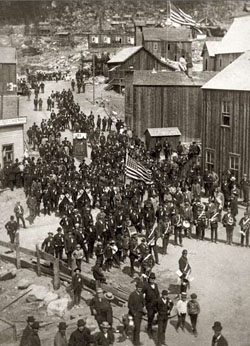Montana: Stories of the Land
Companion Website and Online Teacher's Guide
Chapter 10 - Politics and the Copper Kings, 1889-1904
Chapter 1 - Montana: Where the Land Writes History
Chapter 2 - People of the Dog Days
Chapter 3 - From Dog Days to Horse Warriors
Chapter 4 - Newcomers Explore the Region
Chapter 5 - Beaver, Bison, and Black Robes
Chapter 6 - Montana's Gold and Silver Boom
Chapter 7 - Two Worlds Collide
Chapter 8 - Livestock and the Open Range
Chapter 9 - Railroads Link Montana to the Nation
Chapter 10 - Politics and the Copper Kings
Chapter 11 - The Early Reservation Years
Chapter 12 - Logging in the "High Lonesome"
Chapter 13 - Homesteading This Dry Land
Chapter 14 - Towns Have Lives, Too
Chapter 15 - Progressive Montana
Chapter 16 - Montana and World War I
Chapter 17 - Montanans on the Move
Chapter 18 - The Great Depression Transforms Montana
Chapter 19 - World War II in Montana
Chapter 20 - Building a New Montana
Chapter 21 - A People's Constitution
Chapter 22 - Living in a New Montana
Columbia Gardens: William A. Clark's Happy Legacy
William A. Clark is often cast as the villain in the War of the Copper Kings, perhaps because he was more pretentious and aloof than either Marcus Daly or Augustus Heinze. Even his detractors, however, appreciated Clark's decision to build a recreational park just east of Butte. Columbia Gardens offered playgrounds, a dance pavilion, picnic grounds, flower gardens, and a manmade lake for swimming and boating. Admission was free and Clark, who also owned the streetcar system, provided free transportation to Columbia Gardens for children every Thursday. According to C. B. Glasscock, in War of the Copper Kings (New York: Grosset and Dunlap, 1935), Clark once claimed, "The Columbia Gardens is my monument. Of my many business enterprises it is the one I love best, and it is practically the only one on which I lose money." The Anaconda Company, which owned the park after Clark's death, added a roller coaster, Ferris wheel, and a carousel among other attractions. In 1973, the Company closed the park to expand its open pit mine, and an arson fire destroyed the arcade that same year. Older Butte residents still mourn its loss.

